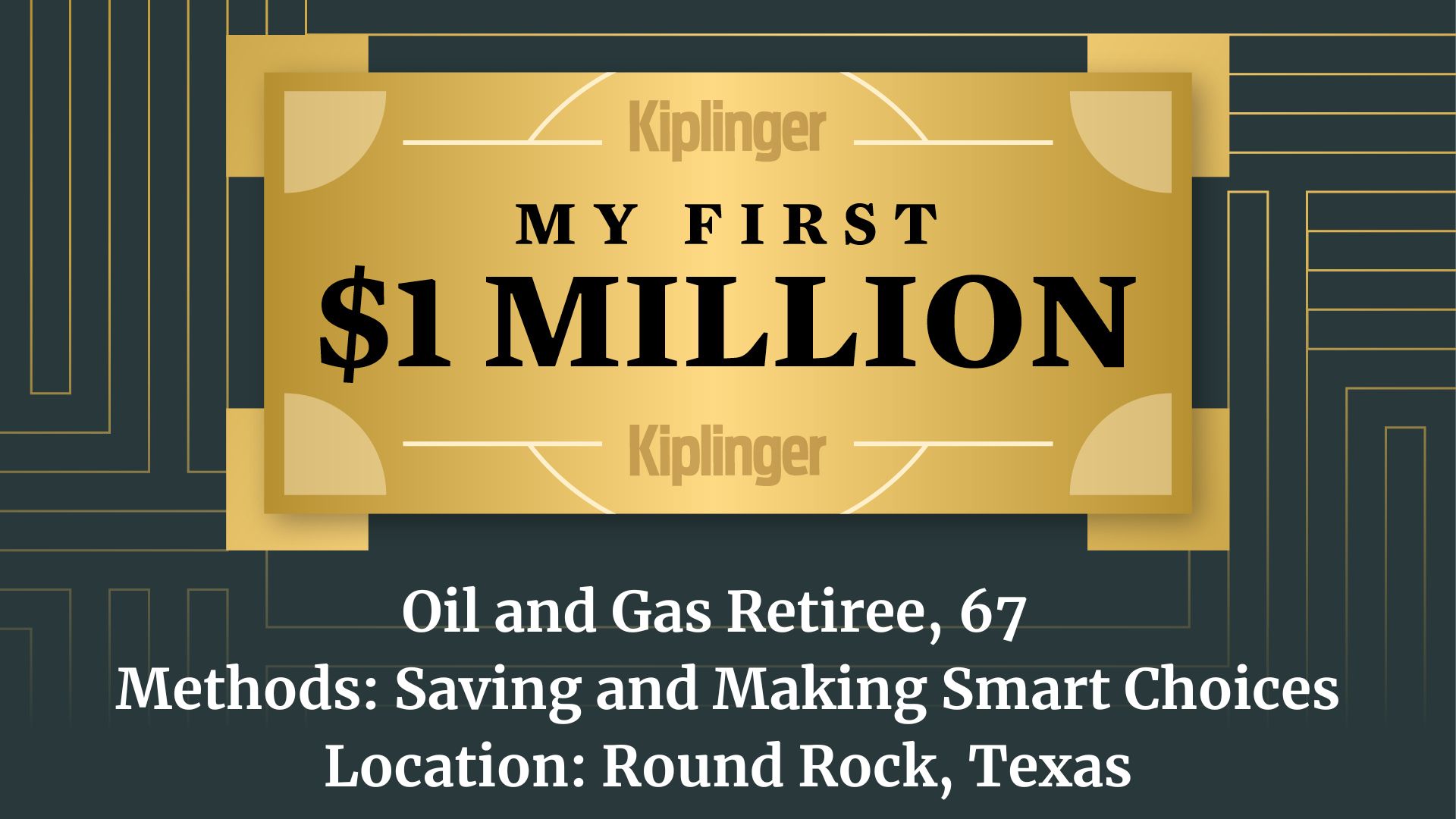5 Great Tools for DIY Stock Investors
Do-it-yourself investors can get help picking stocks or funds, managing their portfolios, and more with these top tools.

Do-it-yourself investors may not have the backing of a big Wall Street firm when it comes to managing their portfolio, but plenty of free tools are available that can make it seem that way.
Of course, you have to be picky about the sources of investing tools and research. You can find a lot of bad actors on the web. And many sites offer great-sounding free tools that quickly turn into pestering sales pitches.
So we gathered recommendations from professional investors and veteran Wall Street watchers and did our own tests to find free tools that provide real help without being too annoying. Here are five worth exploring.
From just $107.88 $24.99 for Kiplinger Personal Finance
Be a smarter, better informed investor.

Sign up for Kiplinger’s Free Newsletters
Profit and prosper with the best of expert advice on investing, taxes, retirement, personal finance and more - straight to your e-mail.
Profit and prosper with the best of expert advice - straight to your e-mail.
Portfolio tracker: EquityStat
It takes only a few seconds to register for EquityStat.com. Once you're in, you can quickly build your portfolio. Just enter the names or symbols of your stocks, bonds or funds and the date you purchased each of them. EquityStat will calculate total returns over various time frames and supply more than 30 other measures, including yield, valuation and more.
You can use the site to generate IRS Form 8949, detailing your securities sales over the year, or get shareable summaries so you can brag (or complain) about your portfolio to friends or on social media.
Rob Berger, a retired securities attorney and investment vlogger, appreciates the clean and simple interface. There are no ads or prods to sign up for a paid version. Karl Swierenga, owner of the site, says that's because EquityStat has been a labor of love since he launched it in 2015.
The site doesn't sell user information or make any effort to profit from users. Swierenga's long-term plan is to charge for some services or host ads. But he says the soonest that might happen would be December 2024.
Fund screener: Finra Fund Analyzer
One of the most powerful tools is also one of the easiest and safest to use. The Financial Industry Regulatory Authority, the self-regulatory body for the brokerage industry, has created a comprehensive search tool that allows you to screen for just about any type of mutual or exchange-traded fund, and you don't have to register to explore it.
Go to the Finra Fund Analyzer site, enter the kind of fund you're looking for (one specializing in energy shares, say, or perhaps value-priced stocks) into the search box at the top, and Finra will search its database of some 28,000 exchange-traded products and mutual fund share classes to find a match for your terms. You can screen the results for a variety of factors, such as management fees, minimum investment size, and ratings and classifications from research firm Morningstar.
Investors can also type in the names or symbols of up to three funds to get head-to-head comparisons of fees and historical returns.
Christopher Cybulski, a certified financial planner based in Austin, Texas, recommends the site to his clients who are do-it-yourself types. "It is simple to use, and it is not biased," he says. Nor is it a front for marketing.
He also likes the way the analyzer offers what he considers to be the most important data – especially performance and expenses – but doesn't overwhelm users with the minutiae offered by costly professional sites. "Not every piece of information is valuable," he says.
Stock screener: FinViz
The landing page at FinViz.com is packed with red and green graphs and small-type tables that may appear somewhat daunting. But it's worth taking a few minutes to click over to the screener tab and start exploring the powerful 76-factor stock screening options.
For example, you can select a list by sector, dividend yield, company size, and how much upside analysts see from a stock's current price. You can also sort your list by all kinds of valuation and financial strength ratios, including price-to-earnings (P/E), price-to-earnings divided by earnings growth (also known as the PEG ratio), and debt-to-equity.
The free site doesn't require a sign-in. It is advertising-supported, so ads pop up frequently. And some tools that you might want to use, such as a back-testing option, are behind a paywall.
Portfolio analyzer: Portfolio Visualizer
You don't have to register to use the free portfolio analysis tools at PortfolioVisualizer.com. The site has a lot of handy tools for testing out various portfolios.
Matteo Hoch, a financial planner in Las Vegas, says the site is his favorite free investing tool because it is easy to quickly enter a list of stocks or funds and then test the portfolio to see how it would have performed in the past, or how it might perform under market stress.
The free optimization tool, for example, will show how to adjust your holdings to reduce expected volatility. You can also run free "Monte Carlo" simulations, which test out a portfolio's performance over hundreds of possible economic and market environments, allowing you to estimate how long your money would last under different withdrawal scenarios.
The site reserves some useful options, such as being able to save or export your optimization tests, for its paid versions.
Asset allocation: Research Affiliates Asset Allocation Interactive
Many investment research firms reserve their data and models for paying customers. Research Affiliates, however, has hosted its free tool for about a decade. It focuses on how best to divvy your money among asset classes and investing styles, but not individual stocks, bonds or funds.
The tool's basic scatterplots and graphs don't require a login. But you do need to register to explore other tools, such as one that shows past returns, including adjusting for inflation, of portfolios with different weightings of, say, large U.S.-based companies, small companies based in emerging markets, or various bond and commodity options. You can also view your portfolio's expected volatility and returns according to the firm's models.
Although Christopher Sidoni, chief investment officer of Pennsylvania-based Gibson Capital, LLC, has access to many expensive professional investment tools, he often uses the free Research Affiliates site because it provides otherwise hard-to-find analyses of foreign markets and allows him to check his recommendations against the firm's well-regarded prediction models.
For example, the tool's valuation-based model currently predicts that large U.S. companies, which enjoyed spectacular stock price increases in late 2023 and early 2024, will return an average of less than 1% per year after inflation over the next decade. Alternatively, the model based on dividend yields and expected growth predicts a more bullish 4% inflation-adjusted annual return. Both models see higher returns from emerging markets, where stocks on average trade at less than 12 times their expected earnings per share – far below the average of 22 for the S&P 500 index.
The site doesn't offer any premium services. And it has no ads – even for funds based on Research Affiliates' recommended strategies. That's because the site is just aimed at making people aware of the firm's work, and, says Jim Masturzo, chief investment officer for multi-asset strategies, "part of our mission is investor education."
Note: This item first appeared in Kiplinger's Personal Finance Magazine, a monthly, trustworthy source of advice and guidance. Subscribe to help you make more money and keep more of the money you make here.
Related content
Profit and prosper with the best of Kiplinger's advice on investing, taxes, retirement, personal finance and much more. Delivered daily. Enter your email in the box and click Sign Me Up.

Kim Clark is a veteran financial journalist who has worked at Fortune, U.S News & World Report and Money magazines. She was part of a team that won a Gerald Loeb award for coverage of elder finances, and she won the Education Writers Association's top magazine investigative prize for exposing insurance agents who used false claims about college financial aid to sell policies. As a Kiplinger Fellow at Ohio State University, she studied delivery of digital news and information. Most recently, she worked as a deputy director of the Education Writers Association, leading the training of higher education journalists around the country. She is also a prize-winning gardener, and in her spare time, picks up litter.
-
 The Five Best Cruise Lines for Retirees
The Five Best Cruise Lines for RetireesRetirement is an ideal time for cruising. Check out the five best cruise lines for comfort, ease, and unforgettable experiences.
-
 My First $1 Million: Oil and Gas Retiree, 67, Round Rock, Texas
My First $1 Million: Oil and Gas Retiree, 67, Round Rock, TexasEver wonder how someone who's made a million dollars or more did it? Kiplinger's My First $1 Million series uncovers the answers.
-
 I'm a Retirement Coach: Eight Surprising Signs You're Ready to Retire
I'm a Retirement Coach: Eight Surprising Signs You're Ready to RetireYou've met your savings goal, your friends are having fun without you, your boss is mean to you, and your kids are grown and gone. What are you waiting for?
-
 'Work Forever' Is Not a Retirement Plan: What Needs to Change for Gen Z, From a Financial Pro
'Work Forever' Is Not a Retirement Plan: What Needs to Change for Gen Z, From a Financial ProSaving for retirement isn't what it used to be. The deck is stacked against Gen Z in some crucial ways. The system is broken, and we need to fix it.
-
 Trump-Xi Talks Boost Stocks to New Highs: Stock Market Today
Trump-Xi Talks Boost Stocks to New Highs: Stock Market TodayInvestors, traders and speculators finish a dramatic week in a risk-on mood.
-
 I'm 55 With 10 Years Until Retirement and I've Made $2 Million on Nvidia Stock. What Do I Do With It Now?
I'm 55 With 10 Years Until Retirement and I've Made $2 Million on Nvidia Stock. What Do I Do With It Now?What do you do with all that appreciated Nvidia stock? We asked a financial expert for advice.
-
 The Best Bank Stocks to Buy
The Best Bank Stocks to BuyBank stocks are part of the financial services sector and are a way to gain exposure to the broader economy. Here, we look at how you can find the best ones.
-
 I'm a Financial Planner: These Three Things Are Missing From Almost Every Financial 'Plan' I See
I'm a Financial Planner: These Three Things Are Missing From Almost Every Financial 'Plan' I SeeA financial plan should be a detailed road map to a worry-free retirement. Watch out: If your plan has these common holes, you could be headed for a dead end.
-
 Is the One Big Beautiful Bill Really All That Great for Your Retirement?
Is the One Big Beautiful Bill Really All That Great for Your Retirement?While tax cuts sound attractive, it's still wise to plan ahead for retirement by considering strategies like Roth conversions to offset potential tax increases in the future and stealth taxes that could surprise you.
-
 Small Caps Hit First New High in Four Years: Stock Market Today
Small Caps Hit First New High in Four Years: Stock Market TodayThe Dow Jones Industrial Average, S&P 500 and Nasdaq Composite also notched fresh record highs Thursday.
